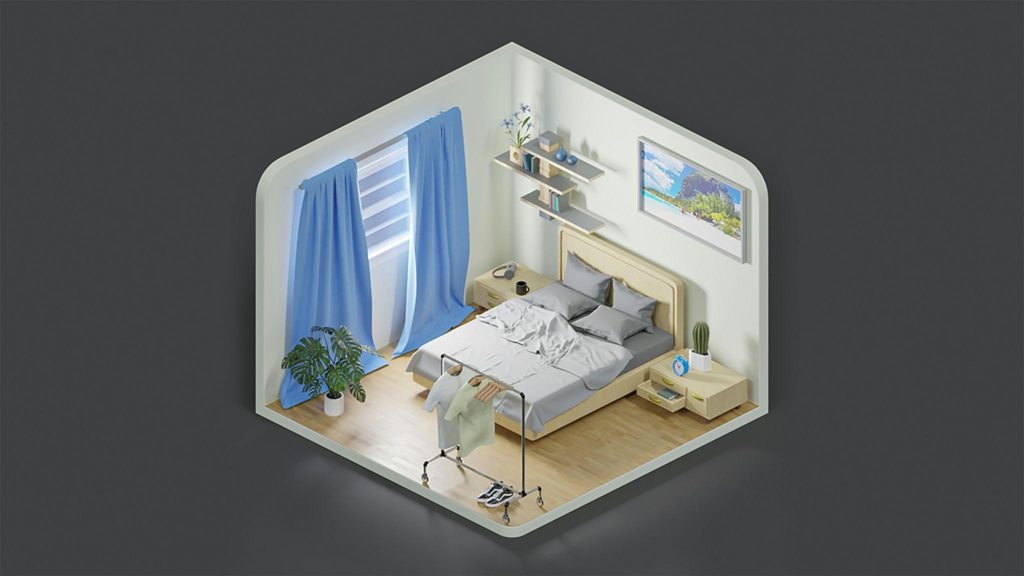Landscape design, a cornerstone of architecture and urban planning, has always been about creating harmonious and functional outdoor spaces. Traditionally, landscape designers relied on hand-drawn sketches, physical models, and rudimentary computer-aided design (CAD) tools to visualize their ideas. While these methods have served the industry well, they often fall short in terms of precision, flexibility, and the ability to communicate complex concepts to clients.
The digital revolution has opened new doors for landscape designers. With the advent of 3D modeling software, designers can now create intricate, detailed, and dynamic representations of their projects. This technology not only enhances the design process but also improves client communication, project management, and collaboration among stakeholders.
In this article, we explore the integration of 3D modeling in landscape design software, examining the benefits, popular software tools, and the future trends that are reshaping the industry.

The Rise of 3D Modeling in Landscape Design
In the past, landscape designers often used paper, pencils, and physical models to communicate their ideas. While these traditional methods were effective, they had limitations in terms of flexibility and visual representation. The rise of digital technology changed the landscape—literally. 3D modeling has emerged as a transformative tool, allowing designers and northern beaches architects to create realistic, immersive environments that can be easily modified and shared.
The benefits of 3D modeling are numerous. Designers can create detailed visualizations that give clients a realistic sense of the final product. The precision offered by 3D software allows for accurate measurements and intricate design details. Additionally, the flexibility of digital platforms means that changes can be made quickly without having to start from scratch.
Popular Landscape Design Software
Several software tools have gained prominence in the field of landscape design. Each offers unique features and capabilities that cater to different needs and skill levels.
- Planner 5D
Planner 5D is a user-friendly platform designed for creating both 2D and 3D designs. It has a specific focus on landscapes, enabling users to visualize outdoor spaces with a high degree of detail. The software’s simplicity makes it accessible to beginners, while its extensive library of objects and textures provides ample creative options.
- SketchUp
SketchUp is another popular choice among landscape designers. Known for its versatility, SketchUp offers a range of plugins and an active community that shares resources and tips. Its intuitive interface makes it easy to learn, while its powerful modeling tools allow for complex designs. The software is widely used in architecture and design, with landscape applications being a significant part of its user base.
- AutoCAD
AutoCAD is a well-known software in the design industry, primarily used for technical drawings and detailed plans. In landscape design, AutoCAD’s precision is invaluable, allowing designers to create accurate site plans and construction documents. Its compatibility with other design software makes it a versatile tool in the landscape design process.
- Revit
Revit is a Building Information Modeling (BIM) software that offers detailed landscape architecture features. It allows designers to create comprehensive 3D models that include not only landscapes but also structures, utilities, and other elements. Revit’s integration with other Autodesk products makes it a powerful tool for collaborative projects.
- Vectorworks Landmark
Vectorworks Landmark is a specialized software designed specifically for landscape and site planning. It offers advanced tools for terrain modeling, plant databases, and irrigation design. Its focus on landscape architecture makes it a go-to choice for professionals in the field.
Case Studies
The integration of 3D modeling in landscape design has had a profound impact on real-world projects. Several case studies demonstrate how these tools have improved project outcomes and client satisfaction.
In one example, a landscape architecture firm used Planner 5D to create a virtual model of a public park. The software’s ability to simulate different lighting conditions and seasons helped the firm present a dynamic vision to stakeholders. The realistic visualization enabled the client to make informed decisions about plant selection and layout, resulting in a successful project.
Another case study involved the use of SketchUp in a residential landscape design. The designer was able to create a detailed 3D model that included outdoor furniture, lighting, and even water features. The flexibility of SketchUp allowed for quick adjustments based on client feedback, leading to a design that exceeded expectations.
Challenges and Limitations
While 3D modeling offers numerous benefits, it also presents challenges and limitations. Technical challenges, such as hardware requirements and software compatibility, can pose obstacles for some designers. Additionally, the learning curve for complex software like AutoCAD and Revit can be steep.
Practical considerations are also important. Accurate measurements and site analysis are crucial for creating realistic 3D models. Designers must also consider sustainability and environmental factors when planning landscapes. Addressing these challenges requires ongoing training and development to ensure designers have the skills and knowledge needed to use 3D modeling effectively.
Future of 3D Modeling in Landscape Design
The future of 3D modeling in landscape design is filled with exciting possibilities. Emerging trends like augmented reality (AR) and virtual reality (VR) are beginning to play a role in landscape design, allowing designers to create immersive experiences for clients. These technologies can enhance the design process by providing interactive elements and real-time feedback.
Artificial intelligence (AI) is also making its way into landscape design. AI can analyze data and suggest design elements based on environmental factors, offering a new level of customization and sustainability. This technology has the potential to revolutionize landscape design by automating certain tasks and improving efficiency.

Conclusion
The integration of 3D modeling into landscape design has transformed the way designers approach their craft. Whether it’s for a new Townsville property or an existing heritage home, this technology has brought new levels of precision, flexibility, and creativity to the industry, allowing designers to create detailed and immersive visualizations that enhance client communication and project management.
As the industry continues to evolve, landscape designers must stay abreast of emerging trends like augmented reality, virtual reality, artificial intelligence, and sustainability. By embracing these innovations, designers can improve their workflow and deliver more impactful projects.
In conclusion, 3D modeling is not just a tool; it is a catalyst for change in landscape design. By adopting this technology and exploring its potential, designers can create outdoor spaces that are not only beautiful and functional but also sustainable and forward-thinking. The future of landscape design is bright, and 3D modeling is at the forefront of this exciting journey.



































